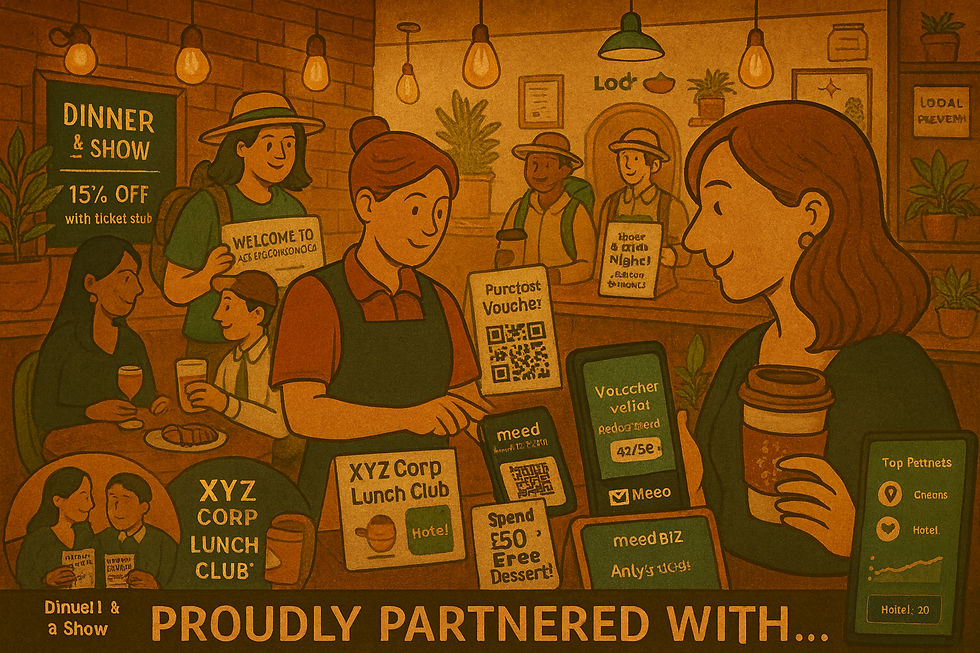No-Shows are Costing Your Restaurant a Fortune. Here's How to Reduce Them
- Phil Ingram

- Jul 31
- 4 min read

There are few sights more disheartening for a restaurateur than an empty table at 8 PM on a Friday night. It’s not just empty; it’s a ghost. A table you held in good faith for a booking that never arrived, turning away hopeful walk-ins in the process. This isn't just a minor inconvenience; it's a significant financial drain on your business.
Restaurant no-shows cost the UK restaurant industry an estimated £16 billion a year alone, and of course, this is a global problem. In a sector with notoriously thin margins, every empty seat is a direct hit to your bottom line. It’s lost revenue, wasted food, and inefficient staffing. But you don't have to accept it as a simple cost of doing business. Here are some practical strategies to significantly reduce no-shows.
The True Cost of a Restaurant No-Show
Before we dive into solutions, it's crucial to understand the full impact:
Lost Revenue: This is the most obvious cost—the full value of the meal and drinks that would have been purchased.
Wasted Food & Labour: Your kitchen staff may have prepped ingredients specifically for the booking. Your front-of-house team organised their section around it. That's time and money down the drain.
Opportunity Cost: This is the silent killer. For every no-show, how many potential walk-in customers did you turn away? You lost not one, but two potential revenue streams for that table.
Team Morale: A dining room full of gaps affects the energy of the space and the morale of your team, who are geared up to deliver a great experience.
Practical Strategies to Combat No-Shows
A multi-layered approach works best. You can combine several of these tactics to create a customised system that works specifically for your restaurant.
1. Sharpen Your Communication
Proactive communication is your first line of defence. Don't leave it to chance.
Automated Confirmations: As soon as a booking is made, send an automated email or SMS confirmation. Include all the details and, crucially, a clear, one-click link to cancel or modify the booking. Make it as easy as possible for a customer to do the right thing.
Gentle Reminders: Send a reminder 24-48 hours before the reservation. A friendly message not only jogs their memory but also presents another simple opportunity to cancel if their plans have changed, freeing up the table for your waitlist.
2. Require a Deposit or Card Details
This is the most direct way to ensure a customer has "skin in the game." While some owners worry about creating friction, it is becoming an industry standard, especially for peak times and larger groups.
Credit Card Hold: A common approach is to capture credit card details at the time of booking, with a clear policy that a fee will be charged for no-shows or last-minute cancellations (e.g., within 24 hours).
Per-Person Deposit: For groups or on busy weekend nights, requiring a small deposit per person (e.g., £10-£20) is highly effective. The amount can be deducted from the final bill.
Full Pre-Payment: For special tasting menus or event nights, asking for full payment upfront is perfectly acceptable and ensures your revenue is secure.
3. Implement a Smart Waitlist
When a cancellation does happen, a waitlist is your safety net. Modern reservation systems can automate this process. When a table is cancelled, an SMS can be automatically sent to the first few people on the waitlist. The first to claim it gets the table. This minimises the time a table sits empty and turns a negative event into a positive one for a hopeful diner.
The Ultimate Solution: Building Real Relationships
The strategies above are tactical and effective. But the ultimate, long-term solution is strategic: building a genuine relationship with your customers.
Think about it. A person is far less likely to stand up to a friend than a stranger. The same psychology applies to your restaurant. When a customer feels a connection to your brand, they are significantly less likely to treat your business as a disposable booking. They become part of a community.
This is where a modern loyalty program, like SCAN by meed for restaurants, transforms the dynamic.
A member of your loyalty program isn't just a faceless reservation; they are an engaged participant in your brand's world. They have an identity linked to your restaurant, a desire to earn their next reward, and a vested interest in maintaining a positive relationship. A no-show would mean breaking that cycle and losing their progress.
While industry-wide statistics are still emerging, the principle is sound: customers who are part of a community are inherently more accountable than those who aren't. They have something to lose—their progress towards a free coffee, a discount on their next meal, or simply their status as a regular.
Best of all, with a system like meed, this doesn't require your customers to download yet another app. They can join instantly with a QR code, making the process frictionless for them and unbelievably simple for you.
By combining tactical deterrents, such as deposits, with the powerful, relationship-building engine of a loyalty program, you can combat the no-show culture. Turn your transient bookings into a loyal community, and you'll find your tables stay wonderfully, and profitably, full.





Comments